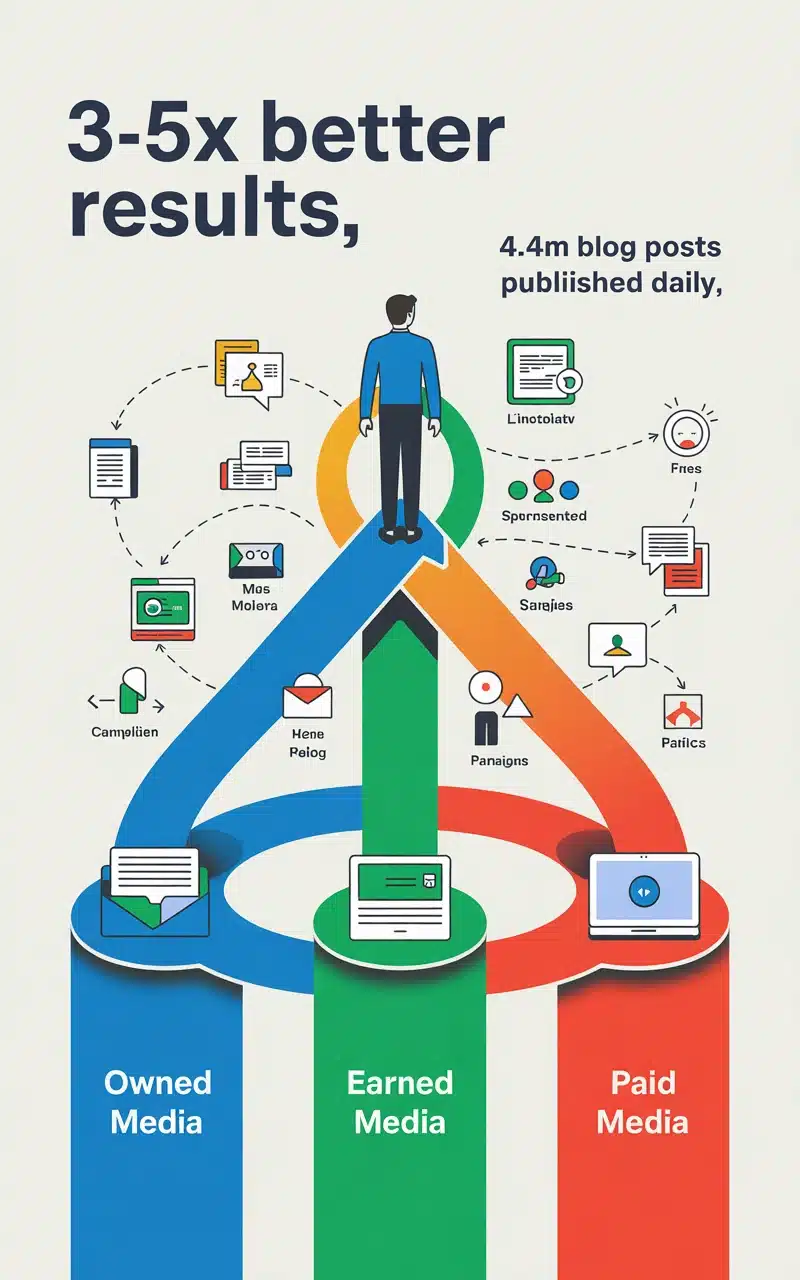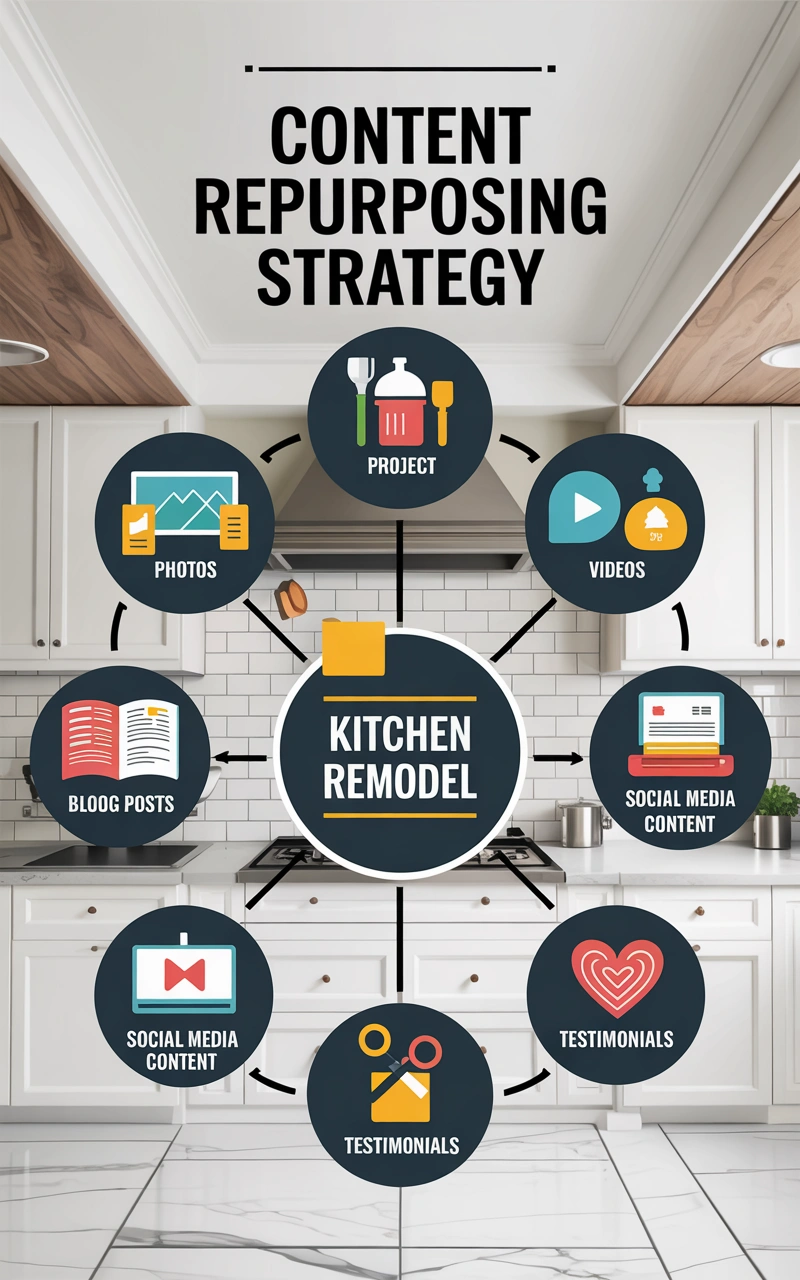
Video Optimization Secrets: Turn Hidden Content into Traffic Magnets
Does your video content get lost in the endless scroll of online platforms? You spend hours creating quality videos, but they barely register a blip in search results or platform algorithms.
Here’s the truth: Creating great video content is only half the battle. The other half involves making your content discoverable through proper optimization techniques that most creators completely ignore.
This guide reveals the technical strategies that transform invisible videos into traffic magnets. You’ll discover how transcripts boost your search rankings, why schema markup matters for multimedia content, and the specific optimization tactics that drive real results.
Why Video Transcripts Are Your Content’s Secret Weapon
Video transcripts do more than help deaf and hard-of-hearing viewers access your content. They serve as a powerful ranking factor that most creators overlook entirely.
How Transcripts Boost Search Rankings
Search engines can’t actually “watch” your videos. They rely on text-based signals to understand your content’s topic and relevance. When you upload a video without a transcript, you’re essentially asking search engines to guess what your video covers based on minimal information.
Transcripts solve this problem by providing search engines with the exact words spoken in your video. This text becomes indexable content that helps your video appear for relevant search queries.
The Direct Benefits Include:
- Keyword targeting: Your spoken words become searchable text that ranks for specific phrases
- Content depth: Longer transcripts signal comprehensive coverage of topics
- Context understanding: Search algorithms better grasp your video’s subject matter
- Related topic coverage: Natural speech patterns often include semantically related terms
Real Impact on Discoverability
Videos with accurate transcripts see measurable improvements in search performance. The additional text content provides more opportunities for your video to match user search queries.
Consider this example: A 10-minute tutorial video might contain 1,500-2,000 spoken words. Without a transcript, search engines only have your title, description, and filename to understand the content. With a transcript, they have access to every concept, technique, and keyword mentioned throughout the entire video.
User Experience Advantages
Transcripts benefit your human audience in ways that indirectly improve your search performance:
Accessibility Expansion
- Deaf and hard-of-hearing viewers can fully engage with your content
- Non-native speakers follow along more easily
- Viewers in sound-sensitive environments (offices, libraries, public transport) can consume your content
Consumption Flexibility
- Users can scan transcripts to find specific information quickly
- Important quotes and statistics become copy-and-pasteable
- Content becomes searchable within the page using browser find functions
Engagement Improvements
- Longer time-on-page metrics from users reading along
- Reduced bounce rates from viewers who might otherwise leave
- Higher completion rates when users can follow both audio and text
Transcript Implementation Strategy
Creating effective transcripts requires more than just dumping auto-generated captions onto your page. Here’s how to maximize their impact:
Accuracy First Auto-generated transcripts from platforms like YouTube often contain errors that can hurt rather than help your optimization efforts. Always review and correct these transcripts before publishing.
Formatting for Readability Break transcripts into logical paragraphs that match your video’s structure. Use speaker labels if multiple people appear in your video. Include timestamps for longer content to help users navigate to specific sections.
Strategic Placement Position transcripts where they provide value without cluttering your page. Many successful creators place them below the video description or in a collapsible section that users can expand when needed.
Schema Markup for Multimedia Content: Speaking Search Engine Language
Schema markup represents structured data that helps search engines understand your content’s context and meaning. For video content, proper schema implementation can dramatically improve how your videos appear in search results.
Understanding Structured Data for Videos
Think of schema markup as a translation layer between your content and search engines. While humans understand that a video about “chocolate chip cookies” is a recipe tutorial, search engines need explicit signals to make that same connection.
Video schema markup provides these signals by defining:
- Video duration and upload date
- Content description and topic
- Thumbnail location and video file URL
- Creator information and publisher details
Types of Video Schema Markup
Different schema types serve different video content purposes:
VideoObject Schema The basic video schema that applies to most video content. This markup tells search engines about your video’s fundamental properties: title, description, duration, and upload date.
Recipe Schema (for cooking videos) Combines video schema with recipe-specific data like ingredients, cooking time, and nutritional information. This markup can trigger rich snippets that show recipe details directly in search results.
HowTo Schema (for tutorial videos) Structures instructional content with step-by-step information. Search engines can display these steps as numbered lists in search results, making your content more prominent and clickable.
Event Schema (for live streams or scheduled content) Provides information about scheduled video content, including start times, locations (for in-person events), and registration details.
Implementation Without the Technical Complexity
You don’t need advanced coding skills to implement video schema markup. Several approaches make this process accessible:
Platform-Specific Tools Many video platforms automatically generate basic schema markup when you upload content. YouTube, Vimeo, and Wistia include structured data by default, though you can enhance this with additional markup on your website.
WordPress Plugins Content management systems like WordPress offer plugins that generate schema markup automatically. Popular options include Schema Pro, RankMath, and Yoast, which create structured data based on your video content and settings.
JSON-LD Implementation For custom websites, JSON-LD provides the most flexible schema markup option. This code format sits in your page’s head section and doesn’t affect your visible content while providing detailed information to search engines.
Measuring Schema Markup Success
Proper schema implementation should produce measurable results within 4-6 weeks of implementation. Key indicators include:
Rich Snippet Appearances Your videos may start appearing with enhanced search result features like thumbnail previews, duration information, and publication dates.
Click-Through Rate Improvements Rich snippets typically generate higher click-through rates because they provide more information and visual appeal in search results.
Search Result Positioning While schema markup isn’t a direct ranking factor, the improved click-through rates and user engagement it generates can positively impact your search positions over time.
Advanced Video Optimization Techniques
Beyond transcripts and schema markup, several additional optimization strategies can amplify your video content’s performance.
File Naming and Metadata Optimization
Your video file’s technical details matter more than most creators realize. Search engines and platforms use this information to understand and categorize your content.
Strategic File Naming Instead of uploading “IMG_1234.mp4,” use descriptive filenames that include your target keywords. A cooking tutorial might use “chocolate-chip-cookie-recipe-tutorial.mp4” as its filename.
Metadata Enhancement Video files contain metadata fields that you can populate with relevant information:
- Title field should match your intended video title
- Description field can include a brief content summary
- Keywords/tags field should contain relevant topic keywords
- Creator field establishes authorship information
Thumbnail Strategies That Drive Engagement
Thumbnails function as your video’s “book cover” – they determine whether users click on your content or scroll past it. Effective thumbnails combine visual appeal with clear value communication.
Visual Hierarchy Principles
- Use contrasting colors that stand out in platform feeds
- Include faces when appropriate (faces generate higher click-through rates)
- Limit text to 6-8 words maximum for mobile readability
- Maintain consistent branding across your video thumbnails
A/B Testing Approach Create multiple thumbnail versions for important videos. Platforms like YouTube allow thumbnail changes, enabling you to test different options and measure their impact on click-through rates.
Video Length and Engagement Optimization
Different video lengths serve different purposes and audiences. Understanding these relationships helps you optimize for specific goals.
Platform-Specific Length Guidelines
| Platform | Optimal Length | Purpose |
|---|---|---|
| YouTube | 7-15 minutes | Educational/entertainment content |
| 15-60 seconds | Quick tips and highlights | |
| 30 seconds – 5 minutes | Professional insights | |
| TikTok | 15-30 seconds | Entertainment and viral content |
| 1-3 minutes | Social sharing and engagement |
Engagement Signal Optimization Platforms prioritize videos that keep viewers watching. Structure your content to maximize these engagement signals:
- Hook viewers within the first 15 seconds
- Use pattern interrupts (visual changes, sound effects) every 30-45 seconds
- Include clear calls-to-action that encourage comments and shares
- End with questions that prompt viewer responses
Measuring Success and Avoiding Common Pitfalls
Effective video optimization requires ongoing measurement and refinement. Focus on metrics that directly connect to your business goals rather than vanity metrics that look impressive but don’t drive results.
Metrics That Actually Matter
Watch Time and Retention Total watch time indicates how much value viewers derive from your content. High retention rates (percentage of video watched) signal content quality to platform algorithms.
Click-Through Rate (CTR) Measures how often people click your video when they see it in search results or platform feeds. Improved thumbnails and titles typically increase CTR.
Engagement Rate Combines likes, comments, shares, and saves into a single metric that indicates content resonance with your audience.
Traffic and Conversion Tracking Use analytics tools to track how video content drives traffic to your website and converts viewers into customers or subscribers.
Common Optimization Mistakes to Avoid
Keyword Stuffing in Descriptions While including relevant keywords helps with discoverability, cramming unnatural keyword phrases into your video descriptions can hurt rather than help your rankings.
Ignoring Mobile Optimization Over 70% of video consumption happens on mobile devices. Ensure your thumbnails, titles, and video quality work effectively on smaller screens.
Neglecting Platform-Specific Features Each platform offers unique optimization opportunities. YouTube has chapters and end screens, Instagram has hashtags and story features, LinkedIn has professional targeting options.
Inconsistent Publishing Schedules Algorithms favor creators who publish consistently. Sporadic uploads signal low commitment to platforms and audiences alike.
Future-Proofing Your Video Strategy
Video optimization continues evolving as platforms update their algorithms and new technologies emerge. Stay ahead by:
Monitoring Platform Updates Follow official platform blogs and creator newsletters to learn about new features and optimization opportunities.
Testing New Formats Experiment with emerging formats like short-form vertical videos, live streaming, and interactive content before they become oversaturated.
Building Cross-Platform Presence Don’t rely on a single platform for your video strategy. Distribute content across multiple channels to reduce risk and increase reach.
Investing in Quality Over Quantity Well-optimized, high-quality videos outperform large volumes of mediocre content. Focus your efforts on creating fewer, better-optimized videos rather than publishing daily without strategic consideration.
Your Next Steps
Video optimization transforms good content into discoverable, engaging experiences that actually reach your intended audience. The techniques outlined here – from transcript implementation to schema markup – provide the foundation for sustainable video marketing success.
Start with transcripts for your existing high-performing videos. Add schema markup to your website’s video content. Then systematically apply these optimization principles to new content as you create it.
Remember: optimization is an ongoing process, not a one-time task. Monitor your results, test new approaches, and refine your strategy based on what works for your specific audience and goals.
The creators who invest time in proper video optimization today will build the audiences and businesses that thrive tomorrow.
Grow Your Business – Get More Customers – Learn How it Works!







